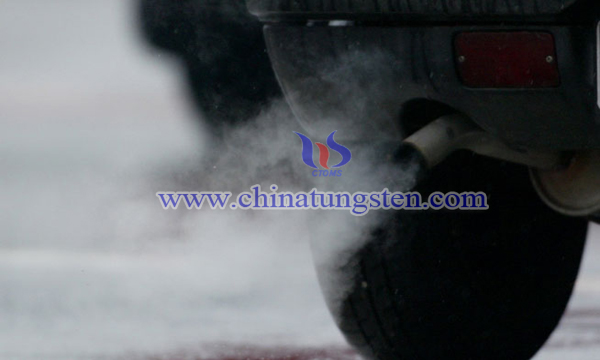Bismuth Tungstate / Silver Composite Photocatalyst
- Details
- Category: Tungsten Information
- Published on Friday, 01 June 2018 15:43
With the rapid development of science and technology, many new desulphurization technologies have been developed. Catalytic oxidation desulfurization is a new desulfurization technology. Catalytic oxidation desulfurization has a wide range of applications, the process does not consume hydrogen, and is easy to implement. The catalyst plays a very important role.

Bismuth tungstate is the simplest structure of Aurivillius type oxide, which consists of (Bi2O2) n2n+ layer and perovskite (WO4) n2n- layer alternately to form an orthogonal structure. The special structure gives special dielectric, luminescence, ionic conductor, catalysis and other properties. The Bi6s track and O2p orbit of bismuth tungstate form the valence band, and W5d orbit is formed. The conduction band, therefore, has a narrow band gap (about 2.7eV) and can be stimulated by absorption of visible light. Therefore, the research and development of bismuth tungstate photocatalytic material will provide a new idea for catalytic desulfurization, which has potential application value in the field of environmental purification and new energy development.
The electron hole lifetime of Bi2WO6 is short and the visible light response range is narrow. It is necessary to modify the catalyst to improve its catalytic performance and solar light utilization. The common modification approaches are element doping, surface modification and semiconductor recombination, etc., and there are many methods to synthesize modified bismuth tungstate, such as hydrothermal method, solid phase grinding method, sol-gel method, co precipitation method and so on. There are many modifiable elements, but there are relatively few reports about silver modified bismuth tungstate photocatalyst.
The preparation process of bismuth tungstate / silver composite photocatalyst is as follows: dispersing bismuth tungstate with water and adding silver nitrate solid agitator. The suspension was irradiated under the xenon lamp, and the supernatant was continuously taken to test the Ag+ in the solution by NaCl solution until the Ag+ was completely reduced to the surface of Bi2WO6, then the solid-liquid separation was carried out, and the nano silver surface modified bismuth tungstate photocatalyst was obtained at 50-100°C by vacuum drying for 1-3h.
The obtained catalyst was applied to the simulated oxidation desulfurization of gasoline. Experimental conditions: the solution of thiophene or benzo thiophene is dissolved into octane, and a simulated gasoline with sulfur content of 500~600μg/g is prepared. The simulated gasoline solution was placed in the photocatalytic degradation device and added the catalyst. The magnetic force was stirred in the darkness for thirty minutes to establish the adsorption desorption equilibrium. The xenon lamp and compressor are opened and the reaction solution is taken at intervals in the light process and the methanol is added as the extractant and the magnetic stirrer is stirred for 5min. The sulfur content detection shows that when the amount of Ag is 0.5%, the desulfurization activity is the highest, and the effect is good. Moreover, the morphology of the catalyst is repeated for 5 times. There is no obvious change. It can be seen as a stable structure with high quality and low price.
- Tungsten Oxide Manufacturer & Supplier, Chinatungsten Online: www.tungsten-oxide.com
- Tungsten News & Prices of China Tungsten Industry Association: www.ctia.com.cn
- Molybdenum News & Price: news.molybdenum.com.cn
- Tel.: 86 592 5129696; Fax: 86 592 5129797; Email: sales@chinatungsten.com